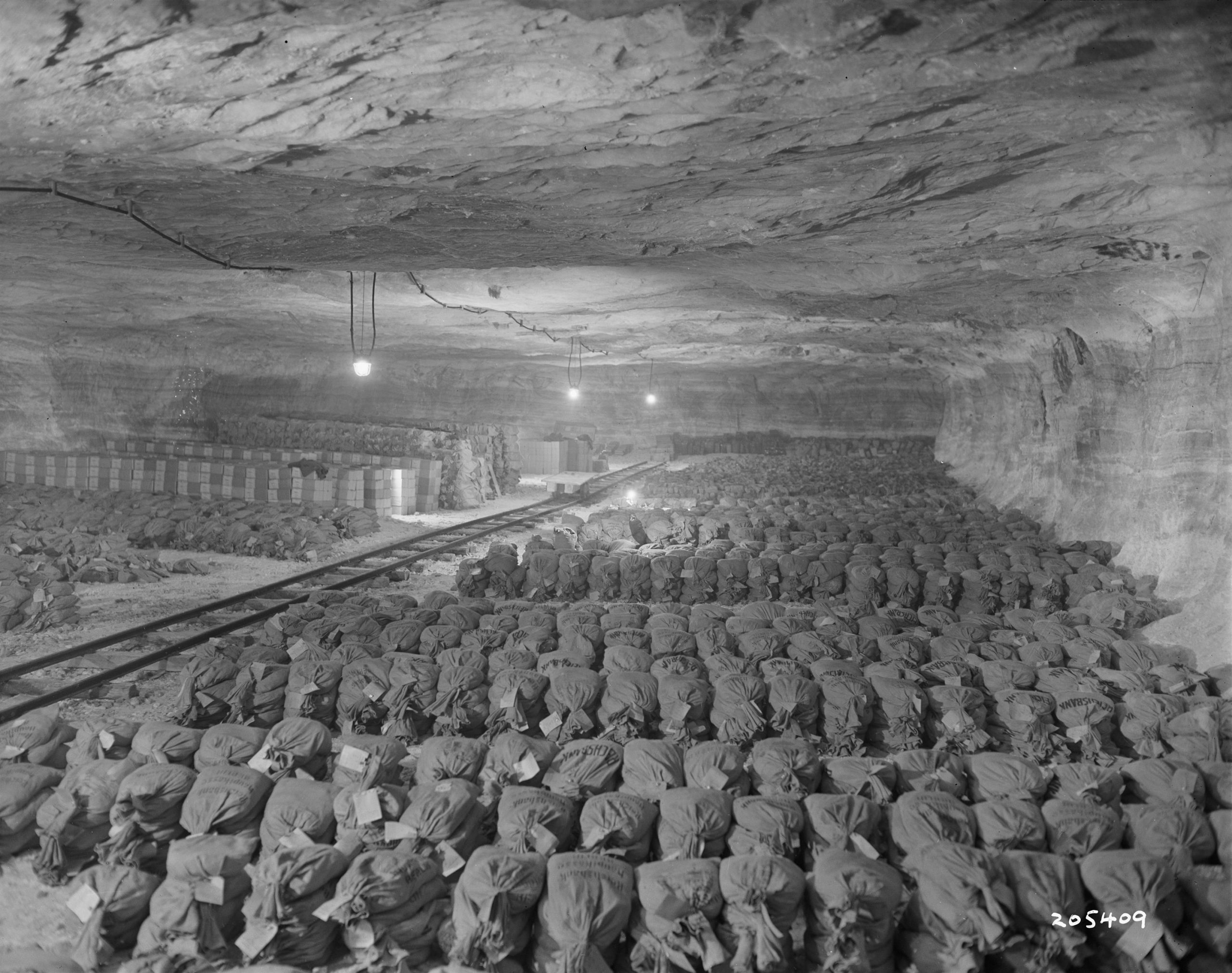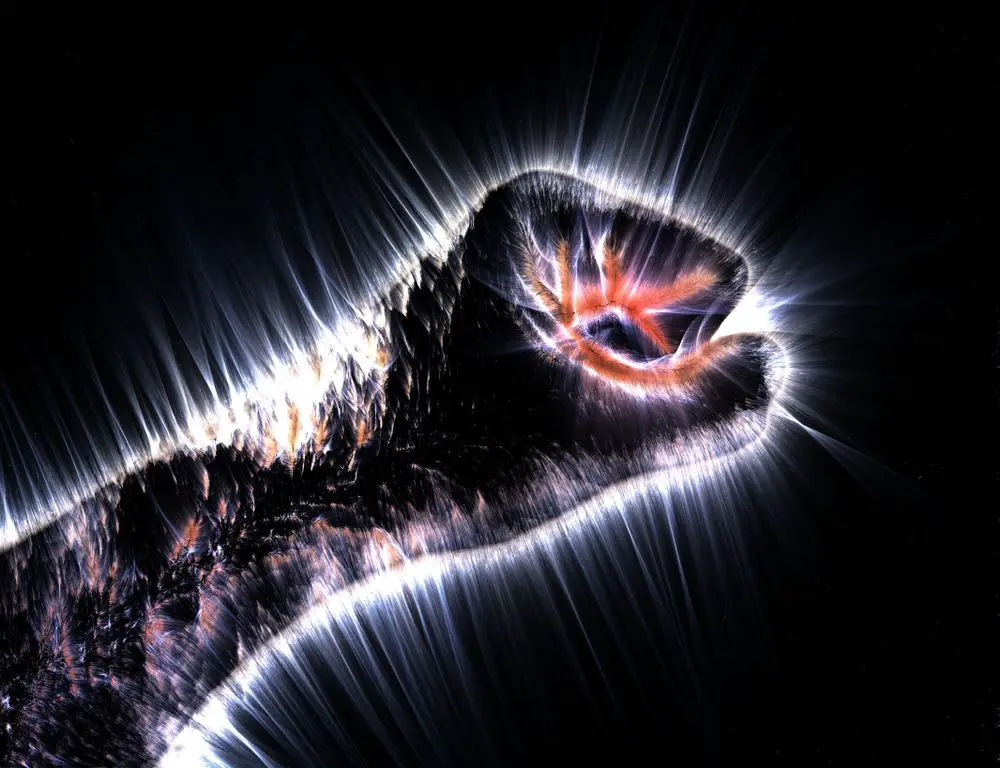 ith the collapse of Germany, the Nazis tried to hide a huge amount of gold, worth 7.5 billion US dollars, and thousands of priceless stolen masterpieces. Most of the treasure had never been recovered, although some pieces were discovered in a small town in Texas in 1990. Towards the end of World War II, on February 3, 1945, while 950 bombers were unloading 2,265 tons of explosives over Berlin, about 2,000 people were killed, another 120,000 were left without shelter, and entire neighborhoods were destroyed.
ith the collapse of Germany, the Nazis tried to hide a huge amount of gold, worth 7.5 billion US dollars, and thousands of priceless stolen masterpieces. Most of the treasure had never been recovered, although some pieces were discovered in a small town in Texas in 1990. Towards the end of World War II, on February 3, 1945, while 950 bombers were unloading 2,265 tons of explosives over Berlin, about 2,000 people were killed, another 120,000 were left without shelter, and entire neighborhoods were destroyed.
5,000 employees of the main Nazi bank, the Reichsbank, hid in the bunker in the basement of the building while 21 explosive devices hit the imposing building, eventually demolishing it. When the terrible assault ceased, all the workers of the Reichsbank and its president, Dr. Walther Funk, had survived, but the destruction of the vital center of the war-torn nation triggered a strange series of events that would lead to one of the most exciting unsolved mysteries in World War 2 history.
It seems that Germany’s wealth had disappeared without a trace so that it could be sheltered as the Allied Forces advanced on German territory. The Reichsbank’s basements housed most of Nazi Germany’s gold reserves, estimated at $ 7.5 billion today, including about $ 1.5 billion in Italian gold.
A suspicious discovery
Dr. Funk immediately decided to transfer the bank’s senior officials to other cities where they were to run the institution and ordered that the gold and money reserves be transferred to a huge salt mine, Kaiseroda, 320 km southwest of the capital. The secret transfer of the bulk of the Nazi reserves weighed about 100 tons of gold and 1,000 bags of banknotes which required 13 train cars to be transferred.
In less than seven weeks, however, the Third U.S. Army, led by General George S. Patton, advanced into the area. Due to the upcoming Easter holiday, the transfer of the whole treasure could not be made, leaving behind 600 bags full of banknotes and numerous amounts of gold. On April 4, the Americans arrived and immediately found out where the treasure had been hidden. On April 7, American officers took the elevator to a depth of 640 meters, where they found a billion German marks.

After blowing up the steel door of Room no. 8, the US Army discovered over 400 numbered bags, the warehouse containing 8,527 gold bars, gold coins, and even more stacks of banknotes. Gold and silver bars, flattened to be easier to store, were packed in crates and chests. There were also suitcases full of diamonds, pearls, and other precious stones stolen from the victims of the extermination camps, as well as bags full of gold dental work. The whole catch turned out to be one of the richest treasures in the world at the time.

It accounted for an astonishing percentage: 93.17% of Germany’s entire financial reserve as the war drew to a close. But that was not all. In other galleries that intertwined through the salt rock, 400 tons of art objects were discovered, including paintings from the 15 German museums and valuable books from the Goethe collection in Weimar.

Under strict supervision, the treasures found in the salt mine were closed in 11,750 containers and loaded into 32 trucks of 10 tons each, to be transported to Frankfurt, where they were stored in the basements of the local branch of the Reichsbank. Despite persistent rumors about the disappearance of one of the convoy’s trucks, nothing of gold or artwork was lost during the transport.
A good part of the treasure is still missing
According to Joseph Goebbels, the head of Hitler’s propaganda, guilty of placing the national treasure in the hands of the Allies was Funk’s “criminal negligence in office.” The Führer had approved the initiative to evacuate the remaining reserves. In fact, the author of the plan had been the officer in charge of his personal guard, a police colonel named Friedrich Josef Rauch.
He suggested that 6.83% of the official gold reserves remaining in the Reichsbank was sent to Bavaria for shelter. The gold ingots and coins to be sent would have been worth $ 150 million today.
Over the next few months, Allied bombing disrupted communications, and individual initiatives created a complicated scenario that was never satisfactorily elucidated. The currency was loaded into two trains while a convoy of trucks was prepared to carry the gold ingots and coins.
In the chaos of a crumbling empire, trains took two weeks to travel the 800-kilometer route to Munich. Along the way, Dr. Funk’s colleague Hans Alfred von Rosenberg-Lipinski ordered that the bags of currency be taken from the train and transferred to the convoy of trucks.
Eventually, the trucks took the money, gold coins, ingots, and foreign currency to a small town in the Bavarian Alps, while the trains headed for Munich. Meanwhile, Rosenberg-Lipinski detained a bag of foreign currency and five small crates “for certain reasons.” It is not known what their fate was, but it is possible that, given the imminent collapse of Nazi Germany, the bank official prepared a comfortable future.
Others who were part of the Nazi party or under their service before it’s collapse did the same thing. Trucks loaded with treasure often traversed the wooded Karwendel Mountains to an infantry training camp. As the harassed officers debated where to hide what was left of the nation’s treasury, it appears that Emil Januszewski of the Reichsbank took two gold bars (worth nearly half a million dollars today).
Meanwhile, the rest of the gold reserves had been buried in well-protected hiding places near a small secluded alpine hut known as the Forest House. The banknote currency had been divided into three deposits and hidden on three different mountain tops. Subsequently, the two recovered gold bullion and a large amount of currency ended up in the care of a certain Karl Jacob, a local official.
They’ve never been seen before. Several lower-ranking Nazis involved in hiding the treasure, including distinguished soldiers, apparently did not resist the temptation. Dr. Funk and other prominent Nazi officials were soon arrested by Allied forces, but none testified that they knew where the missing gold reserves were hidden.
Eventually, the U.S. military recovered some of the Reichsbank’s gold worth about $ 14 million, as well as German gold from other government agencies worth $ 41 million, but the Forest House treasure did not. could be found. For four years, U.S. investigators have been trying to solve the mystery, but eventually, had to report that about 3.5 million (46.5 million today) in gold and about 2 million (12 million today) in banknotes were gone without a trace.
Allied soldiers on the gold
The Germans were not the only ones to take advantage of the surprising opportunities offered by the scattering of gold. Many American soldiers fell prey to temptation, with valuable works of art being transported illegally to the United States. The culprits were tried for theft and either sentenced to prison or dismissed.
Later, in 1990, the world was shocked to learn that true treasures of German art, including one of the most valuable and historically significant works of medieval art, were offered for sale by the heirs of an obscure war veteran. from Whitewright, a small town in the Texan province.
Until his death in 1980, Joe T. Meador kept wrapped in a blanket an invaluable manuscript of the four Gospels dating from the ninth century. Bound in a fine work of silver and gold, the 1,100-year-old manuscript, containing illuminations and illustrations, came from a church in Quedlinburg, Germany. It was unexpectedly sold in Switzerland for $ 3 million.
As it turned out, Meador’s treasure also contained a 1513 manuscript and a 10th-century reliquary. The treasure had been taken from the church in Quedlinburg and hidden in a mine shaft to be sheltered by Allied troops. It seems that Meador, then a lieutenant, stole the objects and sent them to the United States, thus completing one of the greatest thefts of art objects of the twentieth century.
After his death, when the heirs began selling the objects in Quedlinburg, US agencies such as the IRS and the FBI began a series of investigations. After months of legal maneuvers, the heirs agreed to give up the entire treasure for a total of $ 2.75 million, 1 million more than the cash payment already received for the Gospels.
Avid Writer with invaluable knowledge of Humanity!
Upcoming historian with over 30 million views online.
“You make your own life.”





